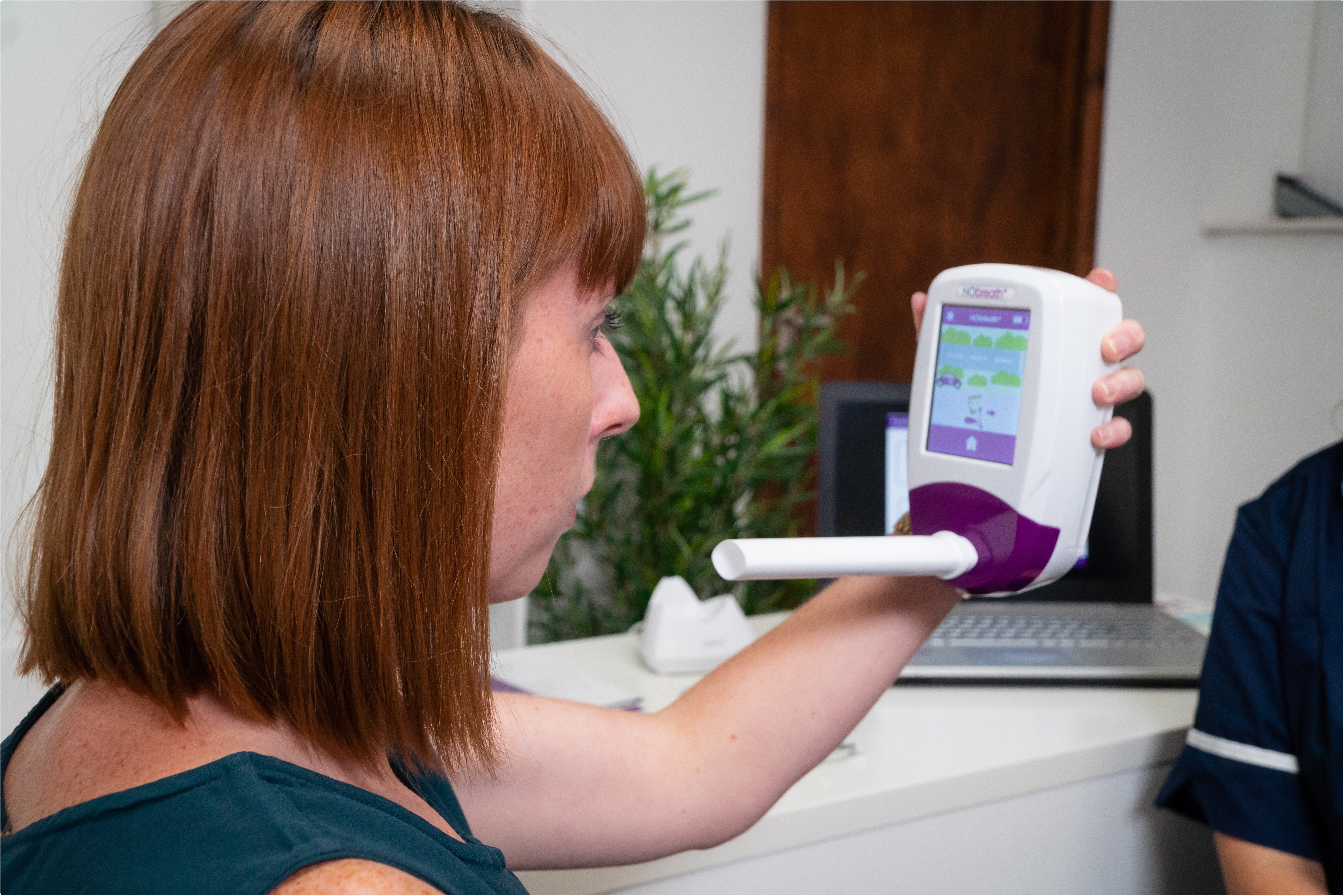Jan 31 2022
UK, med-tech company, Bedfont Scientific Ltd., is celebrating a brighter 2022 as the U.S. Food and Drug Administration (FDA) cleared its NObreath FeNO monitor for use in monitoring airway inflammation.

Image Credit: Bedfont Scientific Ltd
The NObreath®, which conforms to ATS and ERS guidelines1, is a portable, non-invasive device for the measurement of Fractional Exhaled Nitric Oxide (FeNO) in human breath. The production of nitric oxide is often found to be increased in inflammatory conditions such as asthma.
The NObreath® works by measuring FeNO through breath analysis, making the process quick, simple, and non-invasive for both the Healthcare Professional and the patient. Interpreting FeNO levels aids in identifying patients who do/do not require ongoing treatment2 whilst also differentiating between allergic (eosinophilic) and non-allergic asthma3, and if used daily, FeNO measurements can help to predict and prevent exacerbations and attacks4.
Jason Smith, Managing Director at Bedfont, comments, “NObreath has been available outside the US for over 12 years now, we have been working towards FDA clearance for quite some time and we are over the moon to have received it. We are one step closer to achieving our purpose; to make FeNO monitoring lower cost and therefore more accessible globally. According to the Centre for Disease Control (CDC), around 25 million Americans suffer from asthma; that’s a potential 25 million people that the NObreath® can help through FeNO monitoring.”
References
- ATS/ERS Recommendations for Standardized Procedures for the Online and Offline Measurement of Exhaled Lower Respiratory Nitric Oxide and Nasal Nitric Oxide, 2005; American Journal of Respiratory and Critical Care Medicine; vol. 171: 912-930;2005
- Andrew D. Smith, Jan O. Cowan, Sue Filsell, Chris MacLachlan, Gabrielle Monti-Sheehan, Pamela Jackson and D. Robin Taylor. Diagnosing Asthma: Comparisons between Exhaled Nitric Oxide Measurements and Conventional Tests. Am J Respir Crit Care Med Vol 169. pp 473-478, 2004.
- Coumou HBel E. Improving the diagnosis of eosinophilic asthma [Internet]. Taylor and Francis online. 2017 [cited 21 December 2021]. Available from: http://www.tandfonline.com/doi/full/10.1080/17476348.2017.1236688
- Harkins M. Exhaled Nitric Oxide Predicts Asthma Exacerbation [Internet]. Taylor & Francis. 2017 [cited 21 December 2021]. Available from: http://www.tandfonline.com/doi/abs/10.1081/JAS-120033990